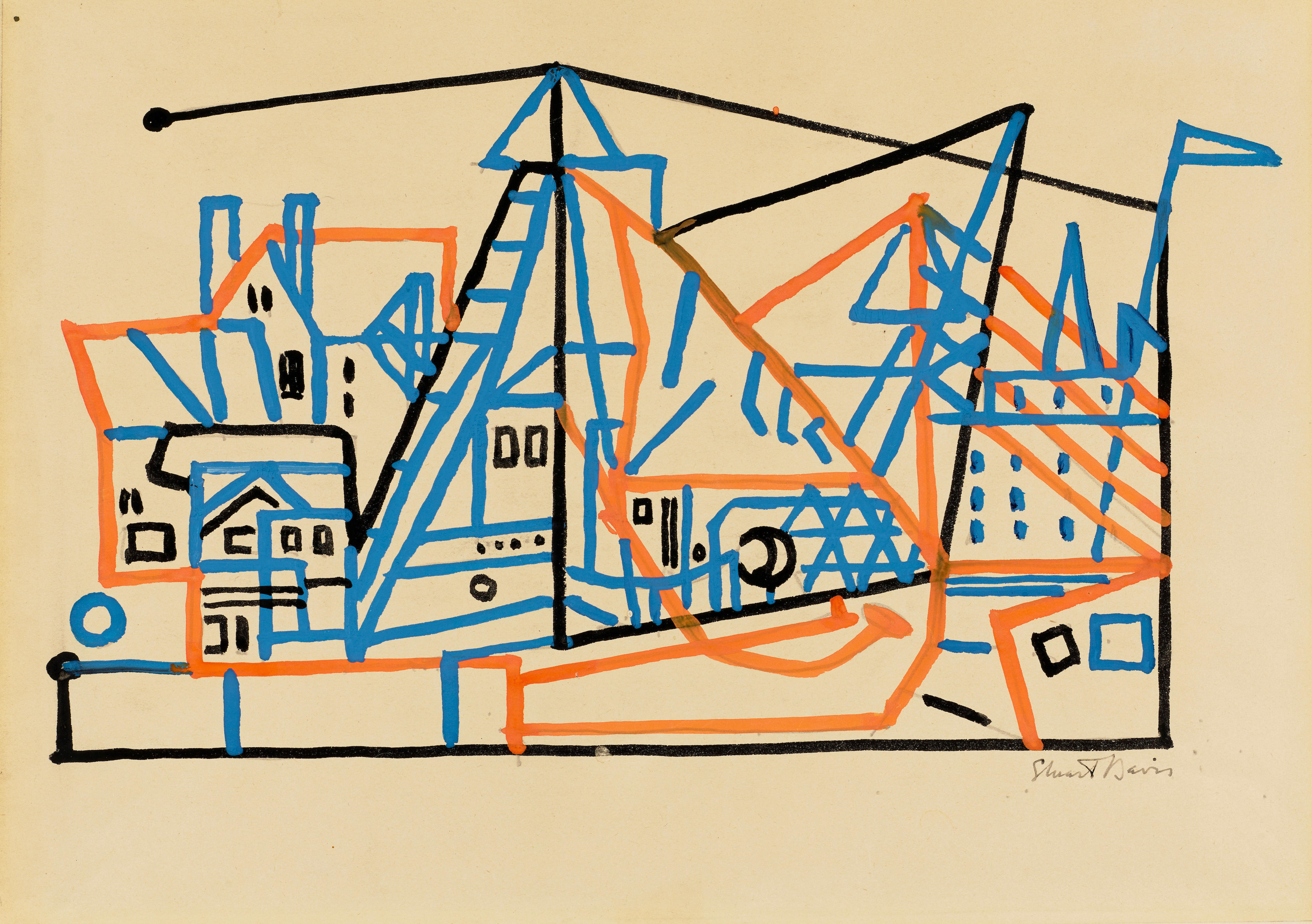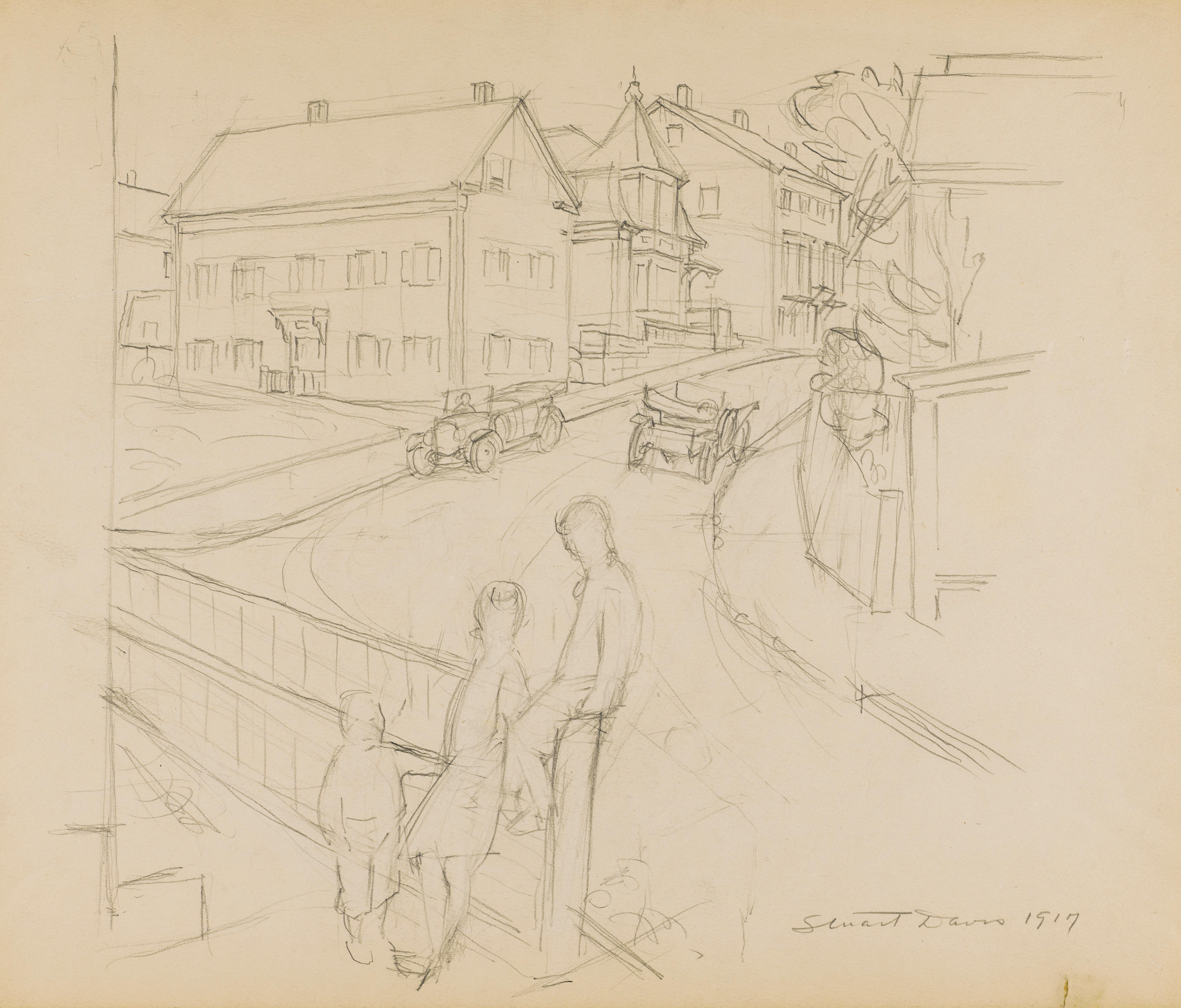Stuart Davis American, 1892-1964 Still Life with Flowers and Vase, 1922 Signed Stuart Davis and dated 1922 (lr) Oil on canvas 34 x 23 inches Provenance: The artist Estate of the artist Salander-O'Reilly Galleries, Inc., New York To the present owner, Dec. 12, 1987 Exhibited: Borgenicht Gallery, New York, Stuart Davis Still Life Paintings, 1922/24, Sept. 27-Oct. 23, 1980 (Catalogue), as Composition with Flowers and Vase Salander-O'Reilly Galleries, Inc., New York, Stuart Davis (1892-1964): The Breakthrough Years, Nov. 4-Dec. 26, 1987, no. 9 Literature: William C. Agee, Stuart Davis The Breakthrough Years, (exhibition catalogue), New York: Salander-O'Reilly Galleries, 1987, n.p., essay, color illus., pl. 10 Ani Boyajian and Mark Rutkoski, Stuart Davis A Catalogue Raisonne, New Haven, CT, 2007, vol. 3, p. 116, no. 1465, illus. Other known titles: Composition with Flowers and Vase Stuart Davis is the quintessential child prodigy. Born in Philadelphia to parents who were both involved in the arts, Davis showed artistic talent early on. His father, a commercial artist and the art editor of the Philadelphia Press, was well acquainted with many artists of the day, as he employed them for graphic work on the newspaper. Several of these were painters the Ashcan School, a group of painters working in New York who had broken with traditional subject matter to depict the working class people a neighborhoods of the city. Stuart Davis met these artists while still a teenager, and was soon invited to study under Robert Henri at his school in New York. Under Henri's tutelage, Davis began to employ his teacher's methods of depicting the world around him. Eventually he began to make quick studies of landscapes, cityscapes and still life objects on his sketch pads. Later, in the studio he would create single compositions that incorporated several views of the same subject from different angles. Cubism proved to be the perfect vehicle for these multiple-view compositions. Works such as Still Life with Flowers and Vase show Davis's early use of Cubism. Here we can already see elements of the artist's future concepts emerging, for example, in the transition of the hard lines of the pink draped cloth into the scrolled paper on the table. Mirroring the coil of the paper is a blue draped cloth; the flower that extends from the vase takes on a pink hue, forming a fractal of the cloth behind. All of these devices can be related to Davis's love of jazz, the purest of American art forms. As in jazz, Davis's use of themes and variations on them is a constant in his work. He would continue to draw forms and patterns from his earlier works throughout his career, in this way creating his own "language" to carry his audience into the next phase of his artistic creation. Davis achieved the fruition of his concepts by his disciplined focus on solitary objects. In the late 'twenties, after returning from Paris, where he had become familiar with the full splendor of Modernism, he began a group of works known as The Eggbeater Series. His unique approach to composition was developed further in these pieces, as he took the lines of his subject (an eggbeater nailed to a table), moving and manipulating them throughout the planes of the various works. In this way he applied both analytic and synthetic cubism to his compositions. This approach, combined with a vivid palette, made his work a cornerstone of American Modernism, including Abstract Expressionism and Pop Art. Notes: Kelder, Diane, Stuart Davis Praeger Publishers, NY, 1971 Lane, John R., Stuart Davis Art and Theory, The Brooklyn Museum, 1978 C
Frame rubbing. Glue relined. Scattered inpaint around the edge of the painting. 6 inch y-shaped line of inpaint in the left center. Scattered touches of inpaint throughout the still life.
Stuart Davis American, 1892-1964 Still Life with Flowers and Vase, 1922 Signed Stuart Davis and dated 1922 (lr) Oil on canvas 34 x 23 inches Provenance: The artist Estate of the artist Salander-O'Reilly Galleries, Inc., New York To the present owner, Dec. 12, 1987 Exhibited: Borgenicht Gallery, New York, Stuart Davis Still Life Paintings, 1922/24, Sept. 27-Oct. 23, 1980 (Catalogue), as Composition with Flowers and Vase Salander-O'Reilly Galleries, Inc., New York, Stuart Davis (1892-1964): The Breakthrough Years, Nov. 4-Dec. 26, 1987, no. 9 Literature: William C. Agee, Stuart Davis The Breakthrough Years, (exhibition catalogue), New York: Salander-O'Reilly Galleries, 1987, n.p., essay, color illus., pl. 10 Ani Boyajian and Mark Rutkoski, Stuart Davis A Catalogue Raisonne, New Haven, CT, 2007, vol. 3, p. 116, no. 1465, illus. Other known titles: Composition with Flowers and Vase Stuart Davis is the quintessential child prodigy. Born in Philadelphia to parents who were both involved in the arts, Davis showed artistic talent early on. His father, a commercial artist and the art editor of the Philadelphia Press, was well acquainted with many artists of the day, as he employed them for graphic work on the newspaper. Several of these were painters the Ashcan School, a group of painters working in New York who had broken with traditional subject matter to depict the working class people a neighborhoods of the city. Stuart Davis met these artists while still a teenager, and was soon invited to study under Robert Henri at his school in New York. Under Henri's tutelage, Davis began to employ his teacher's methods of depicting the world around him. Eventually he began to make quick studies of landscapes, cityscapes and still life objects on his sketch pads. Later, in the studio he would create single compositions that incorporated several views of the same subject from different angles. Cubism proved to be the perfect vehicle for these multiple-view compositions. Works such as Still Life with Flowers and Vase show Davis's early use of Cubism. Here we can already see elements of the artist's future concepts emerging, for example, in the transition of the hard lines of the pink draped cloth into the scrolled paper on the table. Mirroring the coil of the paper is a blue draped cloth; the flower that extends from the vase takes on a pink hue, forming a fractal of the cloth behind. All of these devices can be related to Davis's love of jazz, the purest of American art forms. As in jazz, Davis's use of themes and variations on them is a constant in his work. He would continue to draw forms and patterns from his earlier works throughout his career, in this way creating his own "language" to carry his audience into the next phase of his artistic creation. Davis achieved the fruition of his concepts by his disciplined focus on solitary objects. In the late 'twenties, after returning from Paris, where he had become familiar with the full splendor of Modernism, he began a group of works known as The Eggbeater Series. His unique approach to composition was developed further in these pieces, as he took the lines of his subject (an eggbeater nailed to a table), moving and manipulating them throughout the planes of the various works. In this way he applied both analytic and synthetic cubism to his compositions. This approach, combined with a vivid palette, made his work a cornerstone of American Modernism, including Abstract Expressionism and Pop Art. Notes: Kelder, Diane, Stuart Davis Praeger Publishers, NY, 1971 Lane, John R., Stuart Davis Art and Theory, The Brooklyn Museum, 1978 C
Frame rubbing. Glue relined. Scattered inpaint around the edge of the painting. 6 inch y-shaped line of inpaint in the left center. Scattered touches of inpaint throughout the still life.




.jpg)

.jpg)




Testen Sie LotSearch und seine Premium-Features 7 Tage - ohne Kosten!
Lassen Sie sich automatisch über neue Objekte in kommenden Auktionen benachrichtigen.
Suchauftrag anlegen